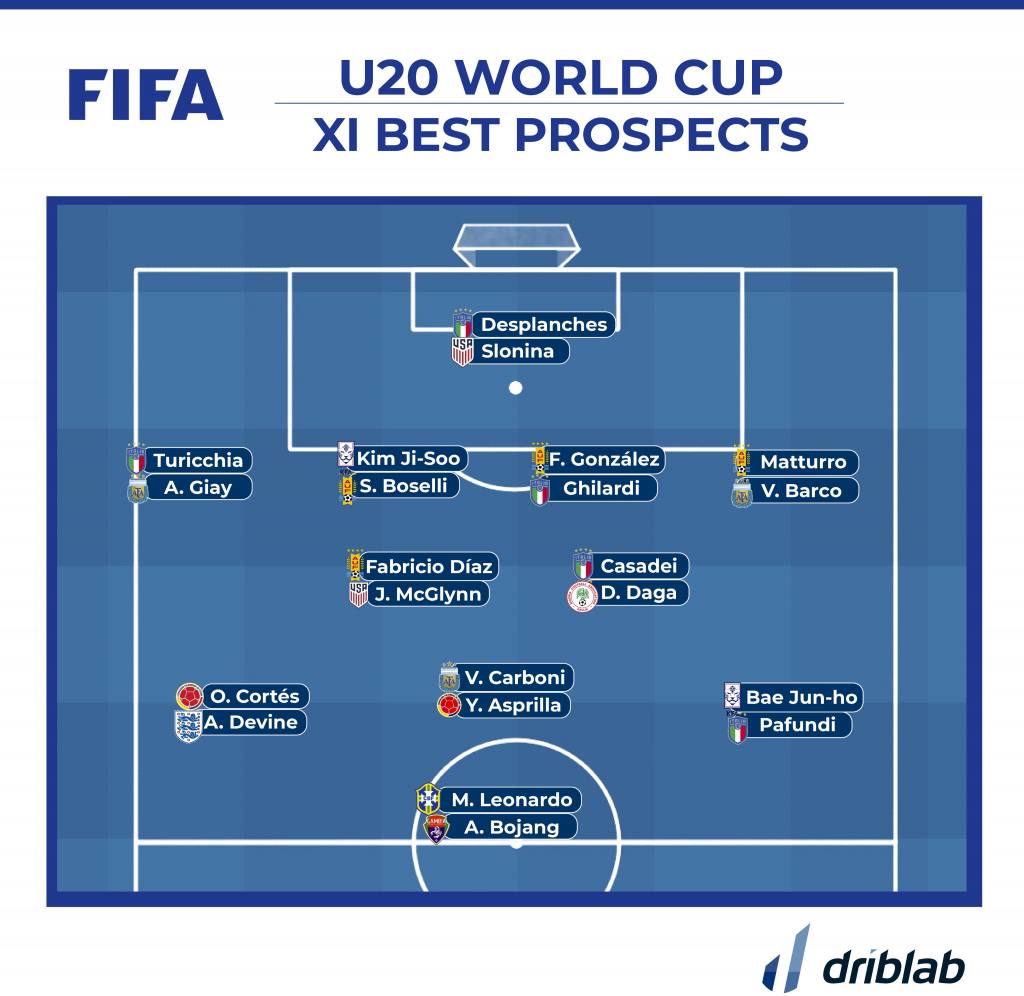After a particularly productive U-20 World Cup in terms of discovering talent, with profiles of a fantastic level in a large number of countries, it is time to take a closer look at the most outstanding players and to discover those who, in addition to having a good tournament, showed signs of having greater potential for the future. These are the 22 most interesting players of the tournament, of which we will focus later on five of them, the most special ones for the future.

Facu Gonzalez (Uruguay, 2003)
Uruguay have formed the most solid and competitive unit of the tournament, largely because of their defensive line: Mateo Ponte (or Rodrigo Chagas), Sebastian Boselli, Facundo Gonzalez and Alan Matturro. We could have easily selected any of the three centre-backs in the line-up, but today we’ll focus on the Valencia player. A tall, elegant and strong left-sided centre-back. He does not stand out for his speed, nor his agility, as it could be argued with Boselli or Matturro, but he makes up for it with reading, positioning and aggressiveness. He has already been called up by Bielsa for upcoming tests with the senior national team.
Valentin Carboni (Argentina, 2005)
Despite yet another disappointment for Javier Mascherano’s team (as at the South American U-20s), Argentina always leave names that will usually end up reigning on the world stage in the future. We could have easily chosen Valentín Barco, Agustín Giay, Federico Redondo or Alejo Véliz, among others, but we believe that the most outstanding player in this tournament has been the Inter striker. He has shown a very high technical capacity for both dribbling and association. He drives the ball very well and is a dangerous player when found in the final third. Very good and very enjoyable to watch.
Cesare Casadei (Italy, 2003)
Key player for runner-up Italy and best player of the tournament thanks to his 7 goals in 7 games… as a midfielder, a similar case to the one we already experienced with Andrey Santos at the last South American U-20 Championship. Chelsea’s all-rounder combines physicality, hard work and getting into the box. His greatest quality is knowing how to detect and attack free spaces, receive and generate. He is probably not the most talented player of this Italian generation, nor the one with the most potential, but he has been the leader of a Nazionale that, at last, is producing again really interesting players for the future (see Desplanches, Ghilardi, Turicchia, Baldanzi, Pafundi, Pio Esposito…).
Kim Ji-Soo (South Korea, 2004)

Both he and Bae Jun-Ho, after their great knockout phase, could have easily fallen here. We chose the Seongnam centre-back for a number of reasons. It has always been said (and proven) that the Asian continent has historically lacked strength in the penalty area and this has historically made them uncompetitive. It is curious, then, that just after seeing Kim Min-Jae lift the Scudetto with Napoli, another 18-year-old 192-centimetre player who is already a starter in his team starts to appear behind him. Ambidextrous centre-back with good movement and positioning. For the first division, he still lacks a bit of punch at times, but at the U-20 World Cup he has excelled in all areas of defence. He is worth keeping on your radar.
Oscar Cortes (Colombia, 2003)
Colombia is always a team that brings fun and talent, as was the case at the aforementioned South American U-20 Championship. At the recently concluded World Cup, we have been able to enjoy together players like Edier Ocampo, Kevin Mantilla, Gustavo Puerta, Yaser Asprilla or Óscar Cortés himself, the most decisive player of all for the second consecutive tournament. He can play in all three attacking positions, but usually stands out more when he plays behind the striker. He associates well and is proving to be very decisive in front of goal with his good shot. He drives and generates on a very regular basis for Millonarios, both in terms of volume and accuracy.

Founded in 2017 as a consultancy, Driblab has driven innovation through data in all aspects of professional football. Thanks to a transversal model, its database collects and models statistics in all directions. From converting matches and videos into bespoke data for training academies to developing cutting-edge technology, helping clubs, federations and representative agencies in talent scouting and transfer markets. Driblab’s smart data is used by clubs all over the world, with success stories such as Dinamo Zagreb, Real Betis and Girondins Bordeaux among others. Here you can find out more about how we work and what we offer.














